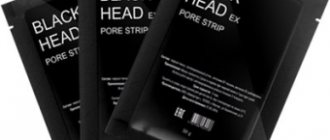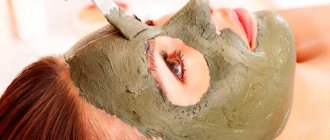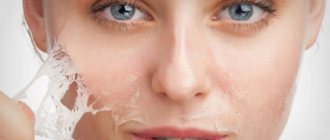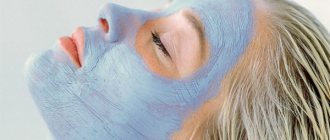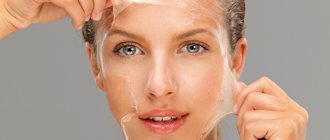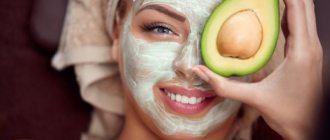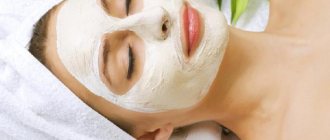Since the time of Cleopatra, clay masks have been famous for their properties to improve the condition of facial skin and prolong its youth. It is widely believed that the Egyptian queen was seductively beautiful thanks to kaolin, the name given to one of the types of clay that is white in color.
In modern cosmetology, about a dozen varieties of clay of different colors are used, each of which has its own unique properties. With their help, you can solve a variety of self-care problems. The main thing is to use the tools correctly:
- firstly, you need to know how often you can make a face mask from clay, how to apply it, how long to keep it on, how it can be removed without damaging the epithelium;
- secondly, you should choose the right composition in accordance with your skin type and the problem that needs to be solved.
You will learn about all this from this material. Let's look at each point in detail.
How to dilute a mask
In order for the mask to have the maximum positive effect, before preparing it you need to select clay that is suitable for the characteristics and type of skin:
- The white composition (kaolin) is used as an antiseptic. Suitable for sensitive skin.
- Blue clay is used as an anti-inflammatory and antimicrobial agent. The mask is recommended for acne-prone skin.
- Red clay is a remedy against irritation caused by an allergic reaction or dry skin.
- The pink composition, which is a mixture of white and red powder, delicately cleanses and soothes the skin. Recommended as a rejuvenating treatment for aging faces.
- The yellow composition draws out harmful accumulations from the dermis and saturates it with moisture. Recommended for irritated, sagging, wrinkled faces.
- Black clay is a means for deep cleansing of skin pores and normalizing the functioning of the sebaceous glands.
All of the above types of clay are sold in the form of fine powder. To prepare the mask, the powder is diluted to a creamy consistency. It is advisable to take boiled water; you can also use milk, herbal infusions, and glycerin.
It is important to achieve a dense mass, just like sour cream. If the composition turns out to be more liquid, it will flow after application to the face and may get into the eyes. If you make the mass too dense, it will quickly dry out on your face and the procedure will be ineffective. In addition, a quickly drying mask will remove moisture from the dermis, causing a feeling of tightness on the face.
The composition must be thoroughly mixed so that it acquires a uniform consistency. If lumps or abrasives remain in the prepared mass, they can injure the epidermis when applied.
Important! Dilute the clay in ceramic or glass containers. Metal containers cannot be used, as the cosmetic composition may react with the metal.
For facial care, you can use either a monocomponent clay mask or one that includes additional ingredients that enhance the positive effect on the dermis. When preparing a multi-component product, the first step is to dilute the clay with water, and then add other products.
Usually liquid (water, milk, decoction) and clay are taken in a 2:1 ratio. It turns out to be the perfect consistency. However, when diluting, additional ingredients are taken into account.
So, if you plan to include oatmeal or semolina in the composition, then the clay powder needs to be diluted with a little more liquid, since the solid components will swell. And if you want to make oil or juice into a useful ingredient, then you need less water.
Benefits of clay for the face
Cosmetic clay has a porous structure, due to which it absorbs sebum and impurities. Deeply and carefully cleanses, removes dead skin cells, makes the complexion look fresher, and eliminates inflammation.
Any type of clay has these properties, but there are differences. They are due to the fact that different microelements predominate in them. This is also the reason why clay can be multi-colored.
- White Due to the fact that it is based on a mineral called “kaolinite,” white clay is often called kaolin. One of its properties is skin whitening. Homemade white clay face masks help even out your complexion and make freckles less pronounced. Its ability to narrow pores and provide a lifting effect is also valued. At the same time, it is an excellent absorbent and a good antiseptic.
- Blue It is mined in Bulgaria and Crimea. The clay has a bluish tint due to the fact that it contains silver. Thanks to this, it has a pronounced antiseptic effect. Therefore, masks based on it are recommended for acne. Improves cellular metabolism, due to which it has a rejuvenating effect.
- Green Recommended for mature skin. Smoothes wrinkles, increases the firmness of the dermis and its elasticity. Thanks to zinc, it has pronounced antiseptic properties, mattifies the skin, and dries out inflammation.
- Yellow Famous for its ability to remove toxins. Improves blood circulation, saturates epithelial cells with oxygen. Tones the skin. Suitable for caring for aging skin.
- Red Contains microelements (iron, copper, manganese), which improve the condition of capillaries and saturate the epithelium with oxygen. Suitable for sensitive skin.
- Pink Combines the properties of white and red clay. Also suitable for the care of delicate skin.
- Black Contains quartz, calcium, iron. Stimulates blood circulation and metabolic processes. Helps get rid of toxins, fat deposits, accelerates regeneration. Helps restore a clear facial contour.
How to apply a mask correctly
Clay is a natural product that does not provoke allergic reactions, so there are practically no contraindications for use.
It should not be used only in the presence of open wounds and purulent inflammations on the skin. Before using the mask, you need to do a test for the presence of an allergic reaction to the components: apply a little product to the inner surface of the elbow and leave for 15 minutes.
The result of using the product will be negative if you ignore the following application rules:
- The composition should be applied only to previously cleansed skin.
- Clay is not applied to the skin around the eyelids.
- Products to which there is an individual intolerance, confirmed by an allergy test, are not used as components of the mask.
Cleaning the face before applying clay is carried out in several stages. First, wash with warm water and remove makeup using a lotion that does not contain alcohol.
Make a compress and steam your face to open the pores and allow the beneficial substances to penetrate deeper into the skin layers. Steam your face with either hot water or a decoction of medicinal plants. The best option for a decoction is chamomile.
To apply clay, use a cosmetic brush or fingertips. The second option is more convenient, but you must wash your hands before the procedure. The clay layer should be quite dense, so it will dry out more slowly.
Results
- Cosmetic clay is an organic substance actively used in cosmetology and medicine. Suitable for home wraps and making masks.
- Types of clay should be selected depending on the condition and type of skin, age. Popular varieties: white, blue, black and green.
- The component has a wide range of useful properties. Helps cleanse, relieve inflammation and redness. Suitable for moisturizing and nourishing the skin, fighting acne.
- To prepare other types of clay face masks, mineral water, talc, dairy products and pharmaceutical cleansing preparations are used as auxiliary components.
Mask exposure time
You should not keep a clay mask for a long time, because when it dries, it begins to tighten the epidermis.
How long you should keep a mask made of any clay on your face depends on the type of epidermis:
- if the skin is dry, then the composition should be on the face for no longer than 5 minutes;
- if the cover is normal or combined, then the optimal time is 10 minutes;
- if the epidermis is oily, then the desired time is 15–20 minutes.
Attention! To prevent the clay from turning into a tightening crust on the face, it should be periodically sprayed with water from a spray bottle.
Indications/conditions for use
Cosmetic clay is a universal component for creating masks. Depending on the type and additional ingredients, it can be used for any skin type, condition, and age.
Recommendations for use:
- problematic and oily skin;
- the presence of acne, pimples and other cosmetic problems;
- pronounced greasy shine;
- redness or irritation, increased sensitivity;
- consequences of tanning and prolonged exposure to the sun;
- the appearance of the first signs of withering and aging of the skin.
Regular use of clay masks for facial skin improves the natural color, normalizes metabolic processes and the secretion of subcutaneous sebum, and also eliminates pollution and toxins even in the deep layers of the epidermis.
How to shoot
A clay mask should not be allowed to dry out. After the time has passed, the clay mask is removed from the face with warm water. You can remove it with a damp cotton swab, or you can simply wash it off.
Important! You need to wash your face without using foams, gels or any other hygiene products.
If the skin is dry, then after the procedure it should be treated with a tonic or chamomile decoction, and a nourishing cream should be applied. If the epidermis is oily or normal, then these actions are optional. But in general, you should focus on your feelings: whether there is tightness or not.
If there is, then it is still better to use the cream. Usually the skin tightens after a drying mask, but if the composition contains oils, then this effect does not occur.
Properties of white clay
Masks made from white clay, or kaolin, as this substance is also called, are popular in cosmetology and are used as care products for oily facial skin, as well as for the treatment of acne. White clay is a natural mineral, and its basis is made up of compounds of aluminum and silicon oxides, the so-called aluminosilicates.
Clay, which is used in cosmetology, has a lot of useful properties:
- Drying the skin - used to remove secretions from sweat glands and subcutaneous sebum.
- The cleansing effect is an ideal product for soft, delicate peeling of the facial skin.
- Absorbing effect - small particles of clay help remove harmful substances and toxins not only from the skin, but also from the human blood.
- Good thermal conductivity makes it possible to use it not only in cosmetology, but also in folk medicine.
Types of cosmetic clay
If you apply a clay mask correctly, you can achieve a positive effect. But for this you should take into account the types of clay:
- kaolin (white clay) promotes a lifting effect;
- keel (blue) has antiseptic properties;
- illite (green) contains zinc;
- yellow helps improve blood circulation;
- pelagic (red) enriches capillaries with copper, manganese, iron;
- pink has a beneficial effect on sensitive and thin skin;
- black contains iron, calcium and quartz, promoting cell regeneration.
Popular recipes for masks with white clay at home
The popularity of masks with white clay at home is explained by the ease of their preparation and the excellent effect of their use. They do not take much time, and the result will not be long in coming.
What are the most popular masks among women today? Firstly, a standard mask with clay, milk and starch, and secondly, masks with the addition of various products. This can be honey, lemon juice, and also calendula, which gives a good antiseptic effect. The addition of string, cabbage leaf, and sea buckthorn oil will cleanse the skin.
There are a huge number of mask recipes, so you can choose those that you like best and add those components that are available in the refrigerator or home medicine cabinet.
Recipe for a classic white clay mask
To prepare a face mask according to the classic recipe, you need to take white clay, which is also popularly called porcelain clay, because of the pure and radiant color of this substance.
Method of preparation: white clay purchased at the pharmacy should be diluted in lukewarm water and applied to the face for 8-10 minutes. After this, rinse with water and apply moisturizer to the skin. Instead of water, clay can be diluted in milk or herbal decoction.
What effect will we get: whitening, getting rid of oily shine and cleansing the skin.
Anti-inflammatory mask for healthy skin
A white clay face mask can also have an anti-inflammatory effect. Dermatologists usually talk about the benefits of black, green and blue clay, but porcelain (white) clay can also remove redness and acne on the skin.
You can make an anti-inflammatory mask based on kaolin, dried linden and nettle. As an active element, it is also good to add vitamin E in capsules.
We buy all the ingredients at the nearest pharmacy and then mix them in the following sequence:
- Take 10 grams of dried linden and nettle and pour boiling water over it. Let it sit for 30 minutes.
- The resulting herbal infusion needs to be filtered and cooled slightly until it becomes lukewarm.
- Pour the herbal decoction into a glass container and add 30 grams of vitamin E.
- Add 20 grams of kaolin and mix thoroughly.
- Apply the prepared porridge for 20 minutes and then rinse thoroughly.
Deep cleansing mask
To cleanse your face well with white clay, you need to know a few secrets:
- You need to first open the pores on your face using steam herbal baths. Chamomile and sage work best. Or just wash with hot water.
- Apply the mask only to clean skin.
- Before using the mask, apply a scrub to your face to remove dead cells.
- After washing off the mask, you need to close the pores: apply any moisturizer to them.
Remember that deep cleaning should be done no more than once a week. This can be done not only in the salon, but also at home.
For example, with this remedy: Mix a spoonful of clay with miramistin and chlorhexidine and stir into a paste until smooth. Apply this composition for no more than 20 minutes.
White clay mask for face whitening
A white clay mask is ideal for whitening your face. You can achieve the maximum effect and lighten your skin by 2 tones by adding fruit and vegetable juice to the composition. The most popular and effective are cucumber or lemon juice. With this product you can not only cleanse and moisturize the skin, but also relieve inflammation and irritation.
How to cook:
- take several large cucumbers;
- grate or extract juice from them;
- mix with two tablespoons of white clay;
- spread on face and leave for 15 minutes;
- Wash thoroughly after use.
The prepared mask can be stored in the refrigerator for 8 hours. Suitable for all skin types. And instead of tap water, you can use mineral water when rinsing off, which will create an additional tonic effect.
Universal rejuvenating white clay mask
To obtain a rejuvenating effect, you can dilute white clay in milk. It is not for nothing that the beauty recipe of Queen Cleopatra, who, according to legend, loved to take milk baths, has survived to this day. It is milk that rejuvenates both the body and facial skin.
A mask with white clay and egg gives an excellent rejuvenating effect.
Aloe juice, which can increase the vital activity of cells, will also help give the skin a rejuvenating effect. The popularity of this recipe is also explained by the fact that this plant grows in many homes, or on the windowsills of beloved grandmothers.
Aloe leaves must first be cut, washed well and put in the refrigerator. Ideally, they will lie there for 10-14 days.
It is better to choose thick and fleshy leaves; more juice and pulp can be extracted from them. Why put them in the refrigerator? Yes, simply under the influence of low temperatures and darkness, aloe will produce special biological stimulants, which will give the effect of skin rejuvenation.
Then everything is simple - you need to mix the juice and pulp extracted from the flower with white clay, and after 20 minutes enjoy the result.
White clay face mask with tea tree
There is such an interesting recipe with the addition of tea tree extract.
You need to take a tablespoon of clay and half a teaspoon of salicylic acid. Next, you need to pour in tea tree essential oil (3-4 drops, no more!) and 3 tablespoons of water. You can use boiled or mineral water.
To properly prepare the mask, first mix clay and salicylic acid. Next, add the oil and rub in a ceramic container until the lumps disappear. Water should be added last.
Naturally, you must first remove makeup from your face and cleanse your skin. The maximum time for which the mask can be applied is 20 minutes. However, the first time you use it, it is better to cut it in half. It is recommended to carry out the procedure no more than 2-3 times a week.
How to make a white clay mask with lemon
Adding lemon juice to masks gives them a whitening effect and even smoothes out annoying wrinkles.
To prepare the mask you need:
- Take white clay and one small lemon.
- Press 3 drops of lemon juice into the prepared container and add 1.5 tablespoons of clay.
- Add a little water and dilute the resulting mixture to a paste.
- You can use a mask.
The approximate time for which you need to keep this whitening mask is 10-11 minutes. It is better to wash it off with slightly cool water. You can add gruel of finely grated cucumber to the mask. This component will refresh the skin and also give it a whitening effect. Cosmetologists recommend making such a mask once every 3 days.
White clay face mask with milk
A white clay face mask can also be added with fresh milk. The product can be either homemade or store-bought, pasteurized. This product will help rejuvenate the skin, get rid of dryness and improve its condition. Therefore, this mask is well suited for dry skin types.
After use, the skin will receive gentle hydration and additional nutrition, and the signs of aging will disappear for a long time.
Making this mask at home is easy and simple:
- Take three spoons of cow or goat milk.
- Add a tablespoon of homemade cottage cheese or sour cream.
- Mix the dairy products thoroughly with a tablespoon of white clay.
- You can apply the paste to your face for 20 minutes.
Nourishing face mask: white clay and honey
The product can remove excess wrinkles and age spots, tightens the skin well and gives it freshness. For preparation you only need honey and clay.
Cooking method:
- Heat a teaspoon of bee honey in a water bath until the honey becomes completely liquid.
- Add a tablespoon of clay, pouring it into the honey in small portions.
- The mixture must be brought to a creamy consistency.
- We wait until the mask cools down a little so as not to burn your face, and then apply it for 20 minutes.
This mask is suitable for women with oily skin. Another variation could be a mask made of honey, kefir and clay. The preparation method is the same, you just need to add a little kefir or whey to the composition.
An interesting option for a mask that is suitable for dry skin types is milk, honey, clay and a couple of drops of almond oil.
How to make a white clay face mask with oils
By enriching your facial care product with essential oils, you can create a real spa at home. By choosing the right components, it is easy to clean pores, remove inflammation, or, conversely, moisturize the skin.
It is better to buy essential oil not in a cosmetics store, but in a pharmacy. No more than 3-4 drops of any oil should be added. Then the remedy will bring benefit, not harm.
To make a clay mask with added oil you need:
- Mix all components (except kaolin) in the selected container.
- After this, add the liquid ingredients to the clay and stir until the lumps disappear.
- Apply to skin.
The base liquid can be boiled water, juice, yogurt or herbal decoction. It is advisable to use a mask with the addition of essential oil immediately after preparing it. But if the need arises, it can be stored in the refrigerator for up to 2 days, tightly closing the container.
Important points about using and applying masks
Before applying the mask, you need to figure out what materials are suitable for working with clay. The clay does not lose its healing properties when in contact with a wooden spatula, designed specifically for easy and convenient application. Of course, not every home has one. Therefore, you can use a brush for masks with natural or artificial bristles . As a last resort, apply the mask with a cotton pad. If you have combination skin, then apply a thicker layer to the problem T-zone; the clay will draw out excess fat.
Dry skin on the cheeks will give up all the moisture with a thick layer, so apply a thin layer to this area.
To determine how long you need to keep the mask on, it is important to understand that the time of the procedure with clay directly depends on your skin type and the type of mask .
- For dry, thin skin, keep moisturizing masks for up to half an hour.
- And if the mask is for acne, blemishes, tightening or whitening, then keep it on for up to 15 minutes. We start with 5 minutes.
- Leave masks for oily and combination skin on for 30 minutes.
While the mask is on your face, it is better to lie down with it and relax, since clay masks are not the lightest . They weigh down the skin of the face and can stretch it when positioned vertically.
White clay mask for different skin types
A white clay face mask is suitable for any skin type without exception. Although here the opinions of dermatologists differ somewhat. Most experts insist that this substance is most suitable for women with oily and combination skin, while those with dry and sensitive skin should still choose a more gentle means for personal care.
There are no other contraindications, and it is worth remembering that white clay can be used for all skin types if the ingredients included in its composition are selected correctly.
For example, if, in addition to kaolin, the product contains moisturizing oils, grape, argan and others, it can also be used on dry skin. These substances will compensate for the drying effect that the clay creates and will not cause harm.
Don't miss the most popular article in the section: Amaranth oil - properties and use in cosmetology, reviews, price of the product.
The importance of following all the rules
The final result largely depends on compliance with the rules for using clay. It should be understood that although clay is a natural component and extremely rarely causes allergic reactions, if improperly diluted, applied to the skin or hair, or washed off, it can cause irritation, redness, itching and other problems.
Due to its composition, any clay acquires the ability to absorb substances from the environment. Therefore, the most important recommendation would be to purchase clay of the best quality. You should not choose masks or dry compositions for dilution with liquid from a cheap price category. It is likely that such clay was mined in areas located near factories (hence, it has absorbed harmful substances) or that its useful life is nearing its end (if there are any useful vitamins and microelements left in it, there are very few of them). Choose products from trusted manufacturers. The shelf life should not exceed more than a year. It is best to use clay a few months after it has been mined and packaged.
After purchasing a quality product, you should make the most effective and harmless composition. Of course, if we are talking about ready-made masks, then you don’t need to do this yourself - the manufacturer has provided for everything. But if you buy clay in jars or bags, that is, in dry form, then you need to learn how to dilute it correctly.
For this purpose use:
- mineral water without gas;
- liquid sour cream;
- cucumber juice;
- sauerkraut juice;
- infusions of medicinal herbs, in particular chamomile, lemon balm, mint;
- olive oil;
- essential oils.
The consistency of the diluted clay should resemble sour cream with 20 percent fat content. If the composition is thicker, the clay will clump and dry out the skin greatly. Rare consistency will not show effectiveness.
It is important to choose the right type of clay. There is a lot of information about this, in addition, on each package it is written what problems a certain type of powder will relieve.
Which clay to choose for problem skin
Like any other procedure, doing clay face masks too often is not recommended. In this case, the properties of the powder should be taken into account:
- blue clay is ideal for oily skin;
- red helps improve skin elasticity for older women;
- white clay whitens the face, eliminating age spots;
- green will narrow pores and reduce oiliness;
- black will dry out acne and get rid of oily sheen;
- pink is recommended for dry skin.
Typically, clay powder is diluted with boiled water. But in some cases, you can use milk, herbal decoctions, and glycerin.
